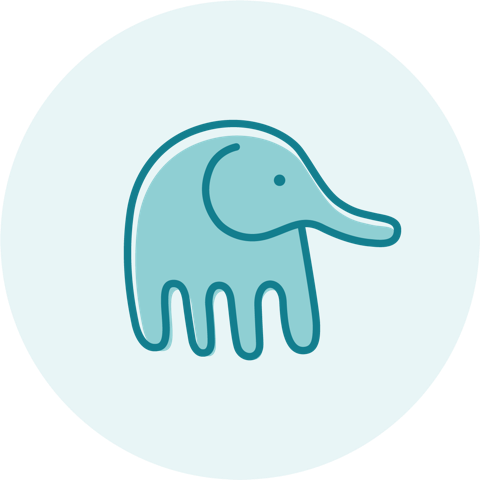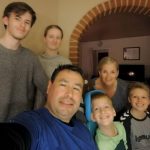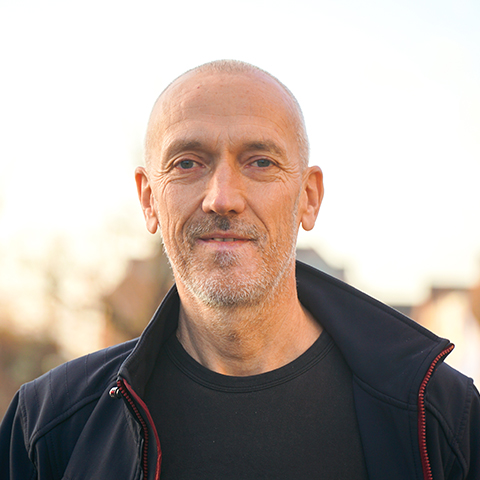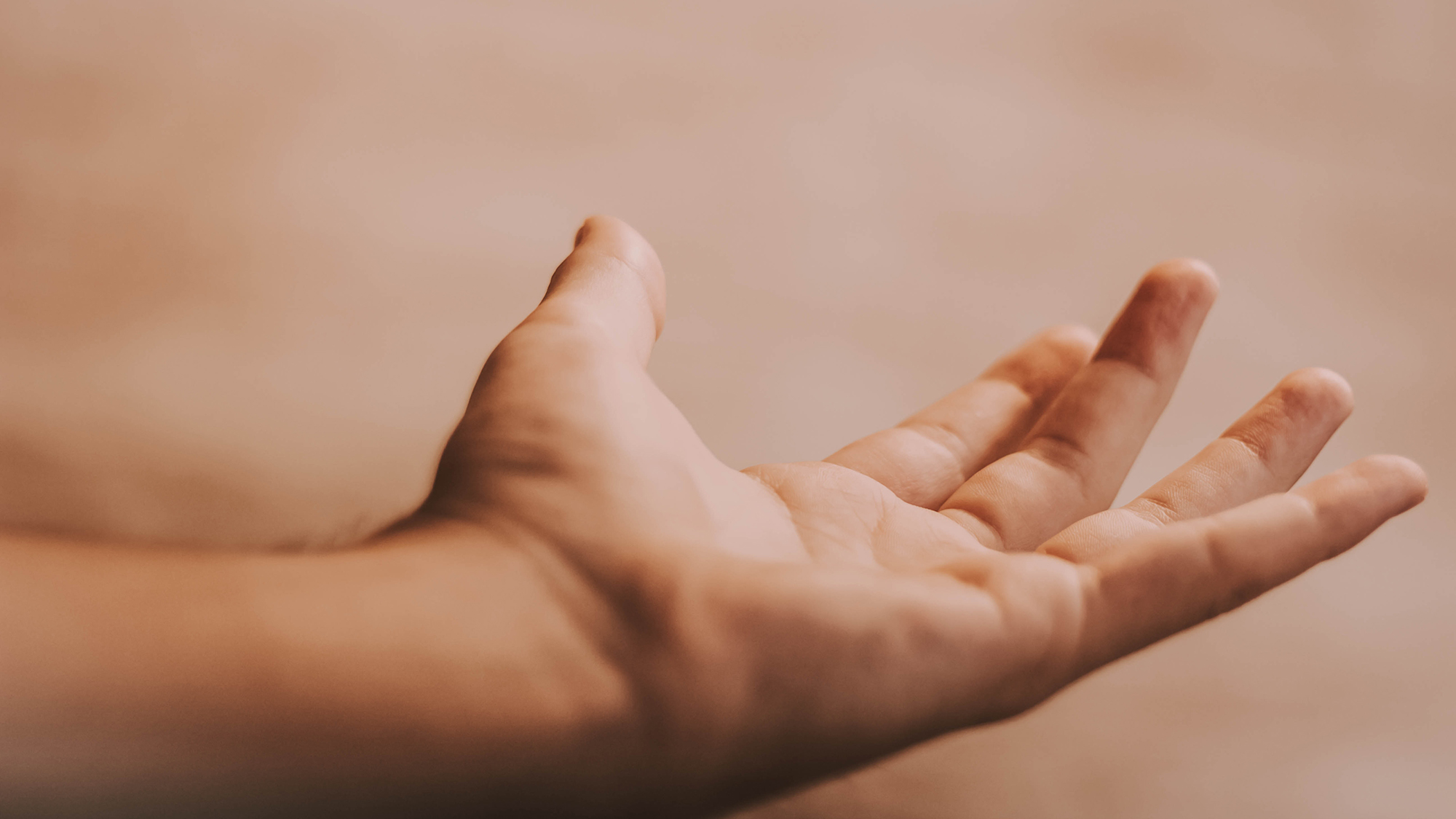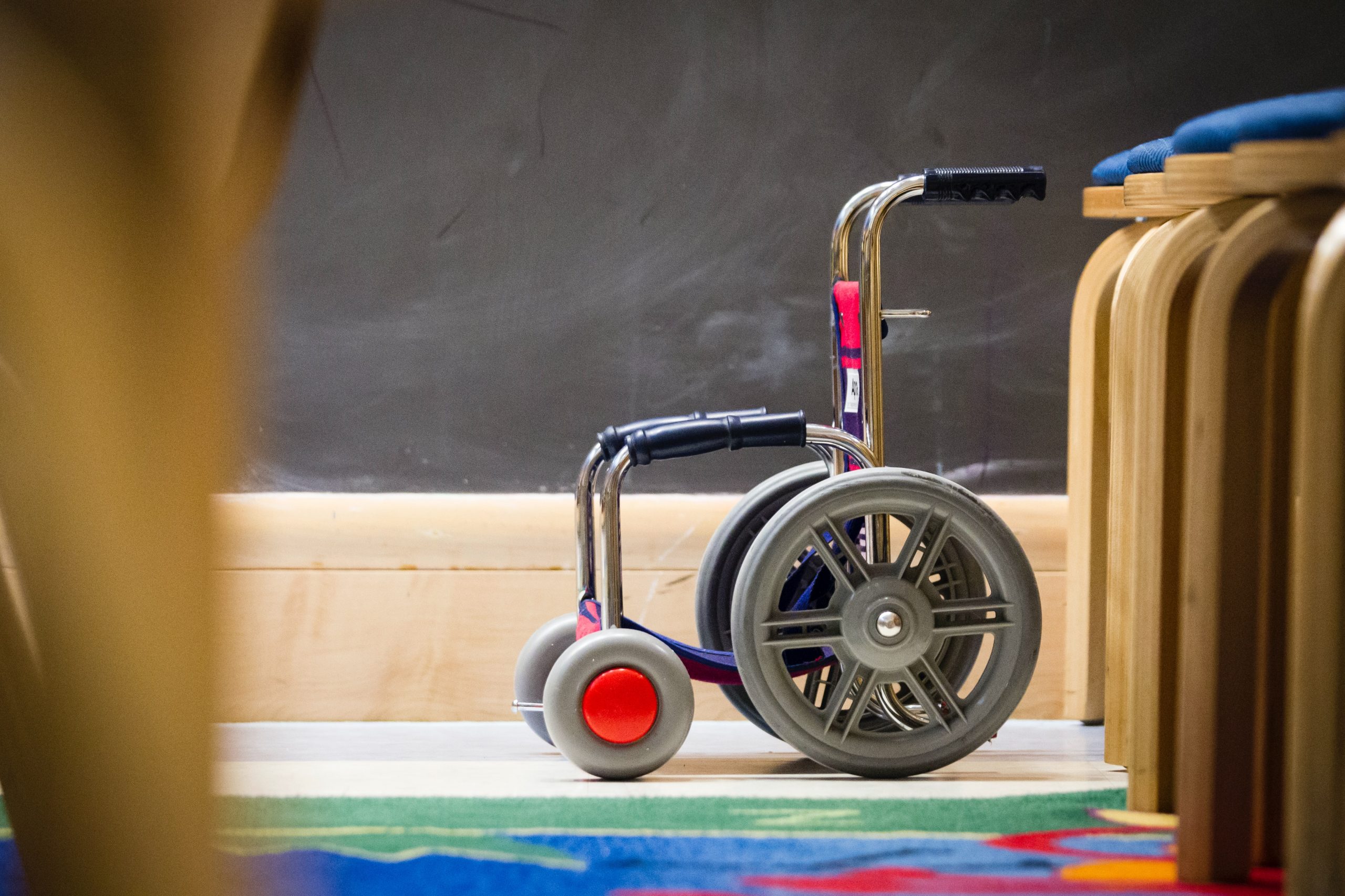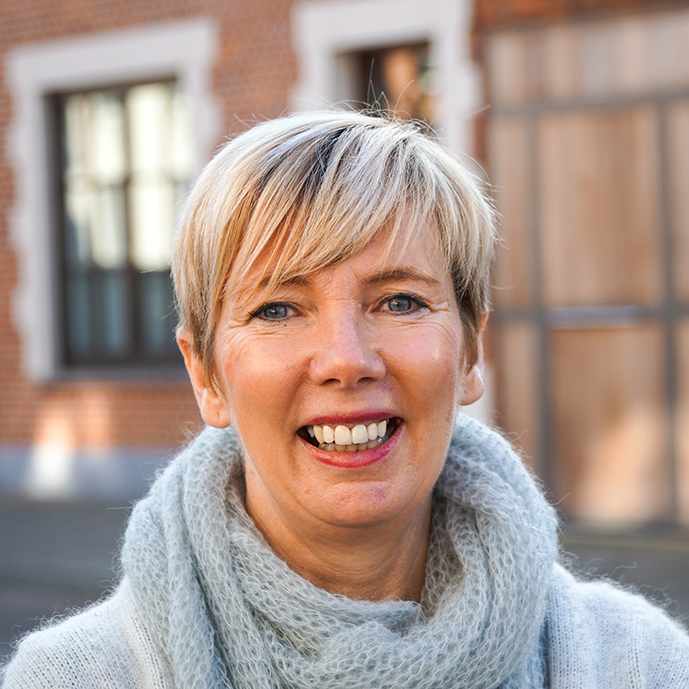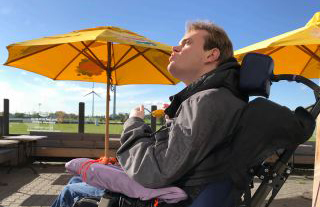
Why Sam likes bumpy rides
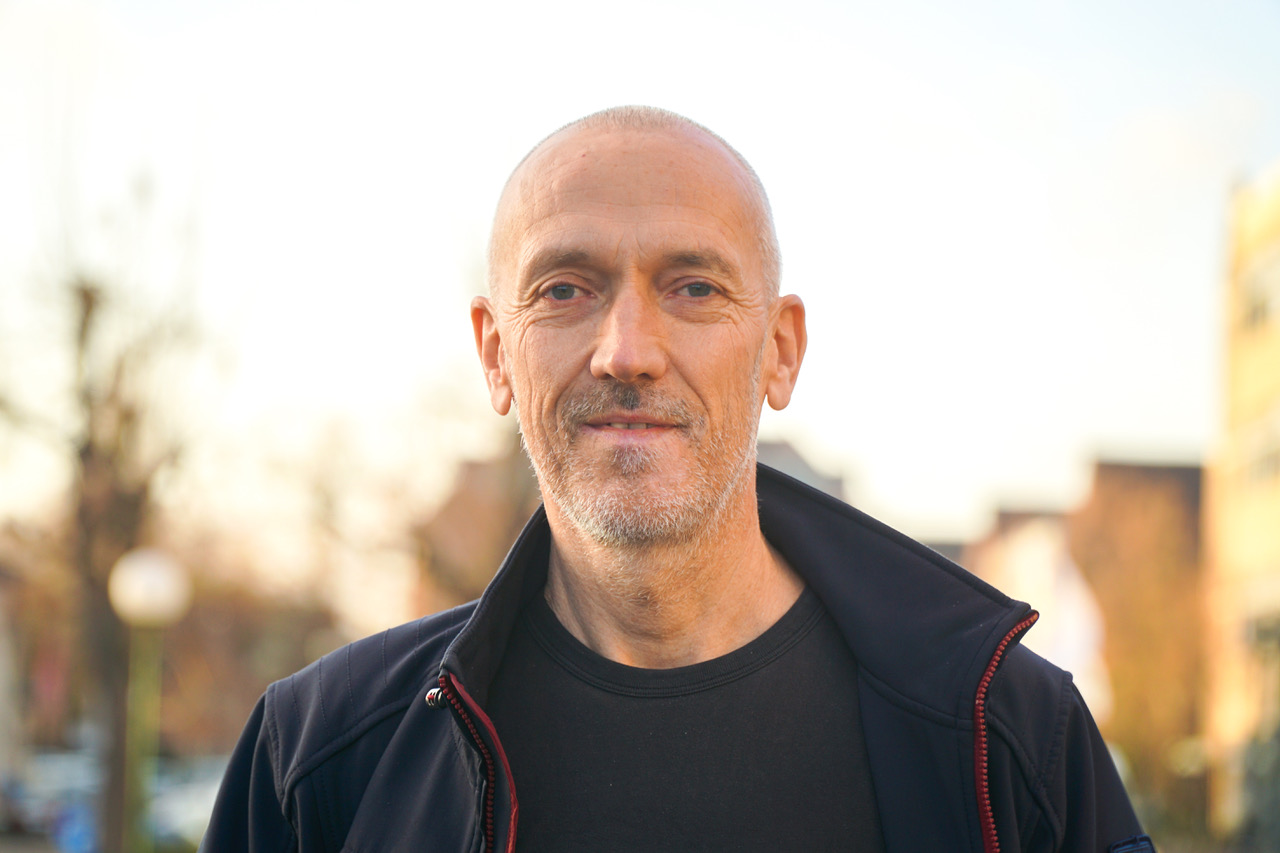
Author: Roeland Vollaard, physiotherapist in Alkmaar, The Netherlands
During the 28 years of Sam’s existence I have walked a lot of kilometres with him. Sam in his wheelchair, me walking behind him pushing the wheelchair. We’ve covered more than five thousand kilometres. That is 2x from Amsterdam to Barcelona. Meaningful fitness for me, but what did all those kilometres mean for Sam?
Bumpy ride
Sam can do a whole lot himself, as long as it’s above his pelvis. Shoulders, arms, neck and head are all under control, while everything beneath his navel does not respond (well) to his brain. His legs hardly move.
So Sam has an excellent excuse to stay seated. You would say, the more comfortable he is the better. Maybe some shock absorption under his seat or extra soft tires, so he does not feel all the bumps? The non-verbal answer from Sam to that question is emphatically “NO”!
When I walk with Sam on a smooth asphalted bike path for a while, he “collapses”. He becomes less alert, waves less cheerfully with his arms and makes fewer noises. If I walk on the side walk or on a paver path, alertness, arm movements and sound usually return. I therefore choose my routes accordingly: poorly maintained sidewalks and paver paths on our way. And Sam is not alone. Many children or adults in a wheelchair experience the vibration through the bumps as something positive.
I have known this for a long time and I have seen it with many wheelchair users. But lately I think I’m starting to make sense of this. That’s because I read a lot of research papers about connective tissue structures in our body. This research brings different insights about body structures and I’m applying those insights (Advanced Biomechanical Rehabilitation) to 8 children in the Class on Wheels.
Connective tissue
Body tissues need specific stimuli to stay healthy. Because Sam does not move or hardly moves anything under his navel, all the tissues there are underdeveloped. Muscle tissue for example: if you do not exercise regularly, your muscle mass decreases quickly. When a top sport athlete has been hit by the flu for a week, he can forget about his medal. The decrease of muscle tissue due to lack of movement is visible on Sam’s hips and legs. Our walks together don’t reverse that process, apparently it does not provide the right stimulus for muscle growth …
Bone tissue is also underdeveloped if it receives insufficient stimuli. More than one hundred years ago the German anatomist and surgeon Julius Wolff described that bone is formed under the influence of compression. This has become known as “Wolff’s law”. An example: if you do not take regular steps and therefore do not get firm pressure stimulation on the feet, legs and hips, then the bones in the feet, legs and hips will not develop properly. When I walk behind the wheelchair of Sam I build good bones. Sam does not, the stimuli through the bumps are probably not strong enough for better bones.
All connective tissues in your body also deteriorate due to lack of movement and stimuli. And those connective tissues are much more important for the functioning of your body than is usually assumed. Connective tissue surrounds every individual cell, but it also surrounds small groups of cells and finally entire organs, blood vessels, nerves and muscle groups. It keeps everything together and provides all cells with nutrition and disposes the waste. A healthy adult has about 20 kilograms of connective tissue.
Stimulation
There are a lot of nerves in the connective tissue, which can register pain/discomfort and posture/movement very well. From Sam‘s pelvis to his feet, there is very little going on regarding posture and movement. This gives the pain/discomfort department free rein to send stimuli to the spinal cord and the brain. That is a big risk for people like Sam, where the movement is stopped by the lack of control from the brain.
Walking over bumps probably stimulates the connective tissue. The stimulation can be split into short term and long term effects.
Short term
All vibrations are picked up by the nerves in the connective tissue that are specialized in posture and movement abnormalities. This information is then sent to the spinal cord and brain. The more of these posture/movement signals are coming in and being transmitted, the less room there is for the signals about possible pain/discomfort. This mechanism works from the first bump.
Long term
The vibrations caused by the bumps also form biomechanical input for the connective tissue structures. The body will respond to this by giving a counter-reaction, in this case by providing better nutrition to the connective tissue and ensuring that the tissue becomes more resistant to the vibrations. The shrinkage of the connective tissue will decrease and that too will make it likely that Sam is better in his skin. ABR does something similar with rubber sticks. They tap on body parts so that a specific vibration enters the body. The body has to react to it biomechanically; this reaction is independent of brain control. The transformation of weakened connective tissue to a healthier state is a slow process. It is more about months than about days. And it requires regular doses of specific stimuli.
Let’s summarize:
– Sam probably likes to ride over bumps because of the direct input of those stimulations on his nerve transmission. Pain disappears into the background, because stimulations from the bumps come in from his legs and overrule the signals of pain.
– Do not choose the smooth asphalt but go for the bumps.
– Do not use too much shock absorption, nice hard tires are preferable.
– And the more often, the better for his body …
Roeland Vollaard
roeland@roelandhelpt.nl

